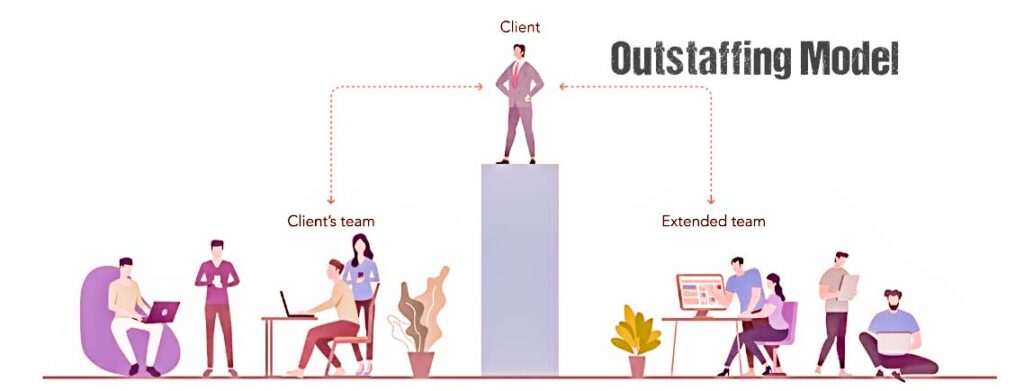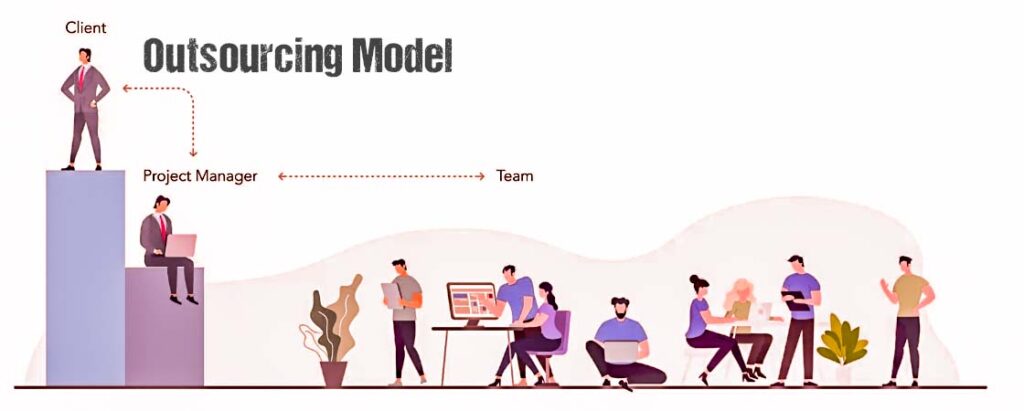In today’s highly competitive business world, companies must stay agile and cost-effective to remain profitable. Outsourcing and outstaffing are two popular business models that have emerged as effective ways to manage talent and control costs. Both models provide significant benefits to businesses, but they differ in several ways. In this blog post, we’ll explore the differences between outstaffing and outsourcing and the factors you should consider when deciding which to use.

What is Outstaffing?
Outstaffing, or staff augmentation, is a business model where a company hires professionals who work remotely under the client’s supervision. The client is responsible for managing the team’s workflow and providing direction, while the outstaffing provider oversees the team’s administrative and HR functions. Outstaffing allows businesses to quickly scale their teams up or down, depending on their needs, without investing in permanent hires.

What is Outsourcing?
Outsourcing is a business model where a company contracts with an external service provider to perform a specific function. The service provider takes responsibility for managing the process and delivering results to the client. The client typically needs more involvement in the day-to-day management of the outsourced function. Outsourcing allows businesses to focus on their core operations while outsourcing non-core tasks to third-party providers.
Difference Between Outstaffing and Outsourcing
Price: Outstaffing is typically less expensive than outsourcing, as the client takes on the management and oversight responsibilities. Outsourcing providers usually charge a premium for their expertise and services.
Management: Outstaffing requires the client to manage the team’s workflow and direction while outsourcing providers take care of management responsibilities. Outsourcing providers are typically more experienced in managing complex projects and teams.
Technical Expertise: Outstaffing providers offer access to specialized talent and technical expertise that clients may need to have in-house. Outsourcing providers typically have a broader range of technical knowledge and experience.
Responsibility: In outstaffing, the client is responsible for the team’s performance and results, while in outsourcing, the service provider is accountable for delivering results to the client.
When to use Outstaffing
Outstaffing is ideal for businesses that need to quickly scale their teams up or down without committing to permanent hires. It is also a good option for companies that have specific project needs that require specialized skills and expertise that they don’t have in-house. Outstaffing allows businesses to control their projects while accessing specialized talent and technical knowledge.
Benefits of Outstaffing
- Access to specialized talent and technical expertise
- Flexibility to quickly scale teams up or down
- Lower costs compared to outsourcing
- Maintain control over project workflow and direction
When to use Outsourcing
Outsourcing is ideal for businesses focusing on their core operations while outsourcing non-core functions to third-party providers. It is also a good option for businesses that need to reduce costs or specialized access expertise that they need in-house. Outsourcing allows companies to leverage the expertise of third-party providers while minimizing the costs associated with managing those functions in-house.
Benefits of Outsourcing
- Access to specialized expertise and services
- Reduced costs compared to in-house management
- Focus on core operations
- Access to the latest technology and industry best practices
Tech Talent Outsourcing
In the technology industry, outsourcing and outstaffing are often used to access specialized tech talent. Outsourcing providers and outstaffing agencies can provide businesses access to the latest technologies and industry best practices. They can also offer access to technical skills and expertise that may only be available in some places. Tech talent outsourcing can help businesses reduce costs, improve productivity, and accelerate their time to market.
In conclusion, both outstaffing and outsourcing offer unique benefits to businesses. The decision to use one model over the other will depend on various factors, including the type of project, the level of control required, the budget, and the availability of specialized talent. By carefully evaluating these factors, businesses can decide which model to use and maximize the benefits of outsourcing or outstaffing.